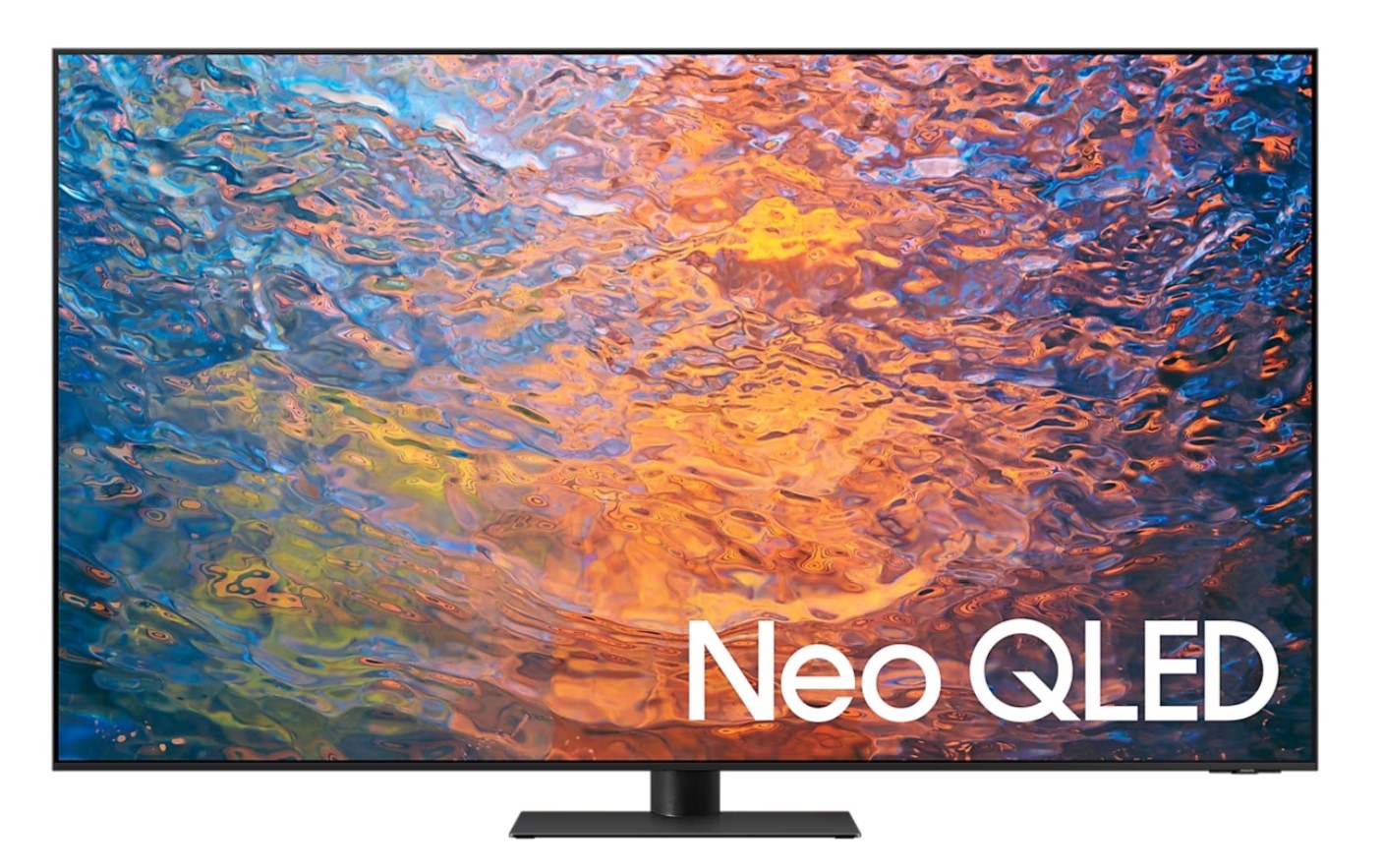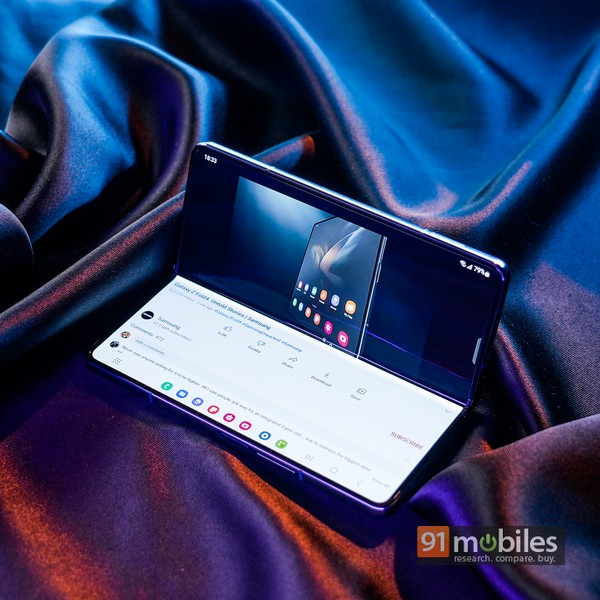QLED vs OLED: display, technology, advantages, disadvantages and more | 91mobiles.com


QLED and OLED are some of the most popular display technologies that you may have come across every now and then. While the former is mostly found on big-screen devices such as TVs, OLED is present on most consumer-based gadgets and gizmos such as smartphones, laptops, monitors, smartwatches and some high-end televisions. Both displays come with their fair share of advantages and disadvantages over each other and function in distinct ways.
In this article, we take a look at how QLED and OLED display technology compares, how it works under the hood, and the benefits of QLED over OLED.
QLED vs OLED display
OLED stands for Organic Light-Emitting Diode, which uses extremely small LED lights arranged in a pattern to produce red, green, and blue lights or RGB. These lights together form a pixel that turns on and off according to the content that is being displayed. The picture or video you see on your screen is because of these pixels working in synchronisation to produce a variety of colours. This display technology is made using organic materials.
As for QLED, it stands for Quantum Light-Emitting Diode which uses quantum dots to emit light. Quantum dots are tiny particles that create an image and produce when a bright light shines right through them. Many may confuse QLED as a variant of OLED due to the similar naming. However, the panel is a completely distinct technology and is rather more related to LCDs as it functions in a similar way. QLED is still relatively a new display technology founded by Samsung in 2017.
QLED vs OLED technology
QLED technology

As mentioned above, QLED technology works identically to LCDs which use liquid crystal display (LCD) panels, colour filters and a white backlight to create images and produce colours on display. However, the white backlight is ditched in favour of a blue LED sheet onto which a layer of red and green quantum dots is added. This helps to overcome the colour inaccuracy of a typical LCD panel. A QLED panel uses blue light in combination with red and green dots to create a perfect white colour.
As a result, the topmost layer, i.e. the colour filter, creates a billion different colours when it receives the perfect white light from the LCD panel as the RGB colours no longer go in different directions.
OLED technology

In contrast, the OLED display doesn’t require any backlight as each LED is capable to produce and emit its own light on the display when an electric current is passed through. To light up the screen of a device, these LEDs are arranged in a particular pattern to make red, green, and blue lights. With these three colours alone, the display is able to produce millions of colours when the pixels light up according to the signal provided by a component responsible for handling the display in a device. Also, when these pixels are completely shut, it results in deep blacks that make up for better efficiency as compared to other display technologies.
QLED advantages and disadvantages
| ADVANTAGES | DISADVANTAGES |
| Higher brightness | Inferior viewing angles |
| Accurate and wide range of colours | Blacks are not as perfect as OLED |
| No risk of burn-in | Contributes to the device’s thickness |
| Budget-friendly | Slightly higher response times |
Advantages
- Higher brightness – QLED displays are generally brighter than OLED displays because they use a backlight that tends to produce significant light as compared to individual OLED pixels. Extremely useful for watching HDR content.
![Samsung QLED TV]()
Samsung offers a wide range of QLED TVs - Wide range of colours – QLED displays tend to generate more accurate colours allowing you to view realistic and natural tones.
- No burn-in risks – Just like LCD displays, QLED doesn’t have any risks of screen burn-in, at least in the long term.
- Budget-friendly – Since QLED displays are based on the same principles as LCD with minor tweaks, it makes them cheaper than OLED. On the other hand, QLED display components are cheaper to manufacture and procure.
Disadvantages
- Inferior viewing angles – QLED displays use a backlight to illuminate the screen. This light goes through several layers before it can be projected on the screen. This causes the light to scatter and results in faded pictures when viewed from side angles.
- Unable to produce deep blacks – Since QLED uses a backlight as the main source of light, the individual pixels are always turned on even when displaying a black picture. In the case of OLED, the pixels are completely shut which results in deep blacks.
- Thicker appliances – QLED technology utilises multiple layers to project an image or content on the screen. This directly contributes to the thickness of appliances such as TVs and makes them bulky.
- Slightly higher response time – Unlike OLED, QLED displays typically have higher response times, meaning while interacting with the screen, the interface may respond slightly late even if it’s a difference of milliseconds as compared to OLED displays.
QLED advantages and disadvantages
| ADVANTAGES | DISADVANTAGES |
| Deep blacks | Burn-in |
| Superior viewing angles | Deteriorates over time |
| Flexible displays | Costly |
| High refresh rate |
Advantages
- Deep blacks – The pixels in OLED displays work in tandem to produce pitch-black colours as demanded by the content. This also results in a better contrast ratio that helps viewers in enjoying the content.
- Superior viewing angles – Each pixel in OLED technology is able to emit bright light in every direction. Unlike QLED, the display retains its colours and brightness even when viewed from extreme angles.
- Flexible displays – Since OLED displays are made on a plastic substrate layer, it allows them to be bendable or flexible which makes manufacturing foldable devices such as Samsung Galaxy Fold and Google Pixel Fold possible.
![]()
Samsung Galaxy Z Fold4 with a large foldable display. - Higher refresh rate – OLED displays typically have low response time as compared to QLEDs and LCDs. This makes the interaction with the display much smoother and lively as in the case of smartphones with AMOLED or OLED displays.
Disadvantages
- Burn-in – When a static image or UI element is displayed on the screen for far too long at the same exact position, it may result in burn-in or ghost images on OLED displays. This is one of the biggest downsides of OLED.
- Deteriorates over time – OLED displays may get dimmer over time and may not produce the contrasty colours as before. This is because the organic materials used in manufacturing may degrade over a period. However, these effects may only be seen after many years of continuous use.
- Costly – Devices boasting OLED displays are generally expensive due to costly materials and manufacturing processes. This is why smartphones with OLED or AMOLED displays are priced higher than their LCD counterparts.
QLED vs OLED: which is better in 2023?
Both QLED and OLED come with their own share of pros and cons. However, since QLED technology is predominantly found on TVs, the comparison can only be drawn with OLED TVs when it comes to practically experiencing both technologies.
Many manufacturers such as Samsung and LG offer a wide range of QLED and OLED televisions. If you enjoy binge-watching content on a large screen, then investing in an OLED TV should be worth it, especially if you have a diagonal seating arrangement in the room. This way, viewers can watch the content from different angles and the image quality won’t be distorted or faded.
On the other hand, QLED televisions boast excellent brightness levels and deliver accurate colours while being less prone to issues like image retention or degradation in panel quality. The downside here is that this display is unable to produce deep blacks and has an inferior contrast ratio than OLED.
For all the latest Technology News Click Here
For the latest news and updates, follow us on Google News.


